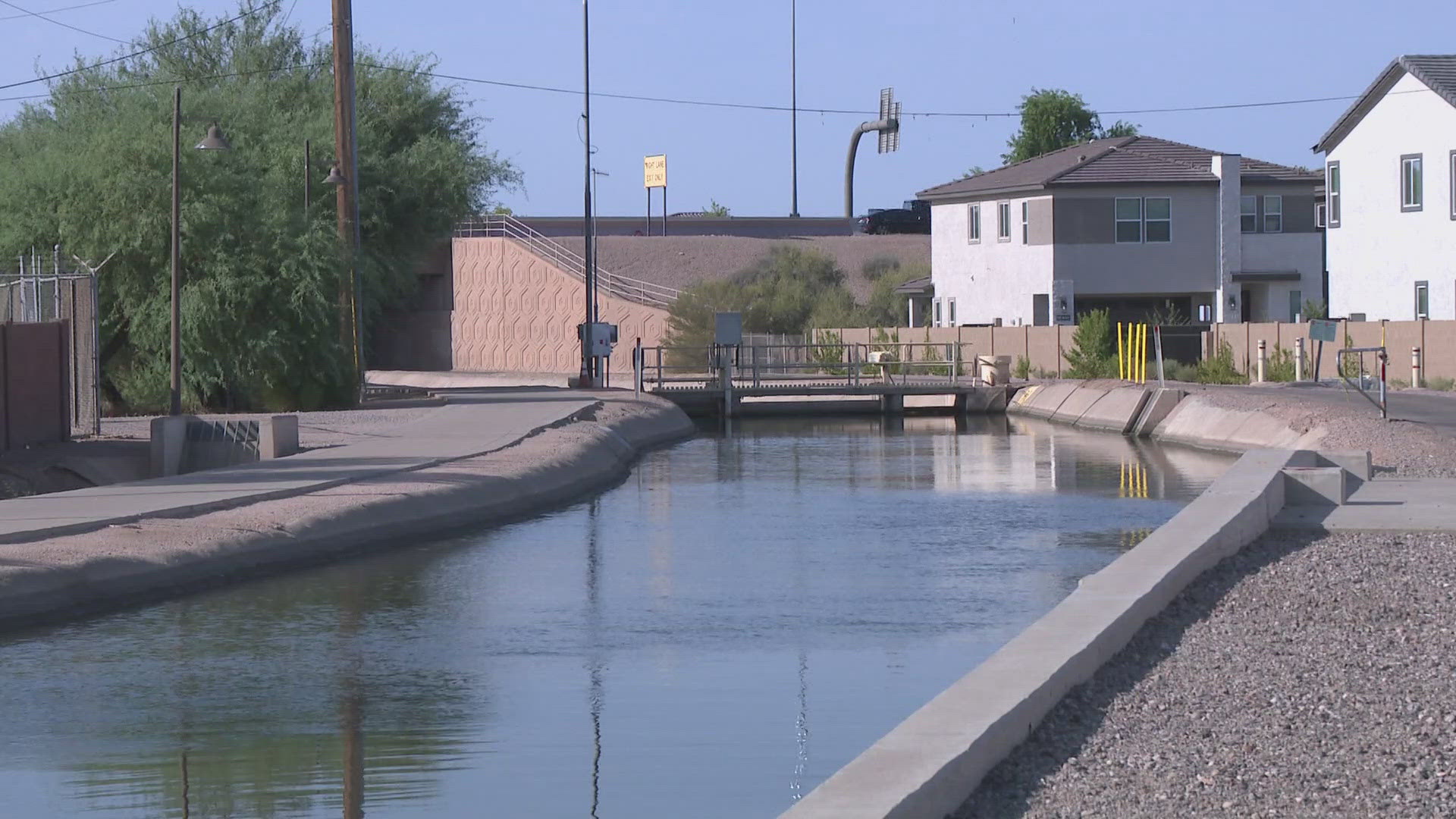CHANDLER, Ariz. — Water in Arizona. It comes from three main sources - the Salt and Verde River System, Colorado River, and groundwater.
Over the past few decades, rain and snowfall in the Colorado River Basin have been highly variable. Despite some wet years, the average natural flow of the Colorado River has significantly declined. Scientists expect even further flow reduction over the next three decades. Water users who rely on the Colorado River are planning for a future with less available water.
In 2022, the U.S. Bureau of Reclamation declared the first-ever shortage on the Colorado River. This shortage continued in 2023 and 2024. Future hydrologic projections indicate that frequent Colorado River shortages are likely. The Colorado River Basin states are working with cities, tribes, and environmental groups to find solutions.
With Arizona's priority system in place, delivers to Central Arizona agricultural users have been nearly eliminated. Some cities and tribes are experiencing water reductions. State 48 has a 100-year assured water supply. This is a rigorous state program where a developing city has to prove they have enough water supply for 100 years... And for future customers for 100 years.
What does this all mean for the City of Chandler, Arizona? If Colorado River supplies continue to decrease, Chandler will rely on other available water supplies. Chandler's drought preparations include:
- Securing a diversified water supply to reduce the pressure from one water source
- Implementing a progressive water conservation program and ordinances that actively promote water conservation practices
- Investing in reclaimed water infrastructure to ensure the city is using 100 percent of its water supplies. Chandler delivers reclaimed water to more than 350 customers; this reduces the demand for drinking water supplies
- Constructing a reliable well program that allows Chandler to pump groundwater during surface water shortages and to meet summer peak demands
- Developing an underground storage and recovery program that allows the city to store surface water underground so it can be recovered using city wells when it's needed during surface water shortages
Simone Kjolsrud, City of Chandler Water Resources Manager, explained, "about 57 percent of Chandler's water comes from the Salt and Verde System. Thirty seven percent roughly comes from the Colorado River and then depending on the year, what's happening with our surface water supplies, we try not to use more than six to eight percent groundwater."
"We've been planning for not only the existing customers that we have but knowing that we would have more customers in the future," said Kjolsrud. The City of Chandler has been preparing for drought and surface water shortages for decades. Smart water management decisions and water policies help Chandler maintain a reliable water supply. The city has invested in infrastructure, diverse water supplies, water reuse, underground water storage, and conservation programs.
Infrastructure, like the canals, is the reason this east valley city will be able to keep up with the growing demand for water for years to come. Kjolsrud emphasized, "these canals are really the life blood of what has allowed the Phoenix Metropolitan area to grow into the cities we see today."
If you want to learn more about Chandler's water and where it comes from, you can register online for "Chandler Water Resources 101." This free course will be at the Sunset Library (4930 W. Ray Road in Chandler, AZ 85226) on Wednesday, October 9, 2024 from 6-7 p.m. You can register here: https://www.chandleraz.gov/events/chandler-water-resources-101-where-does-our-water-come
>> Download the 12News app for the latest local breaking news straight to your phone.
12News on YouTube
Catch up on the latest news and stories on our 12News YouTube playlist here.

